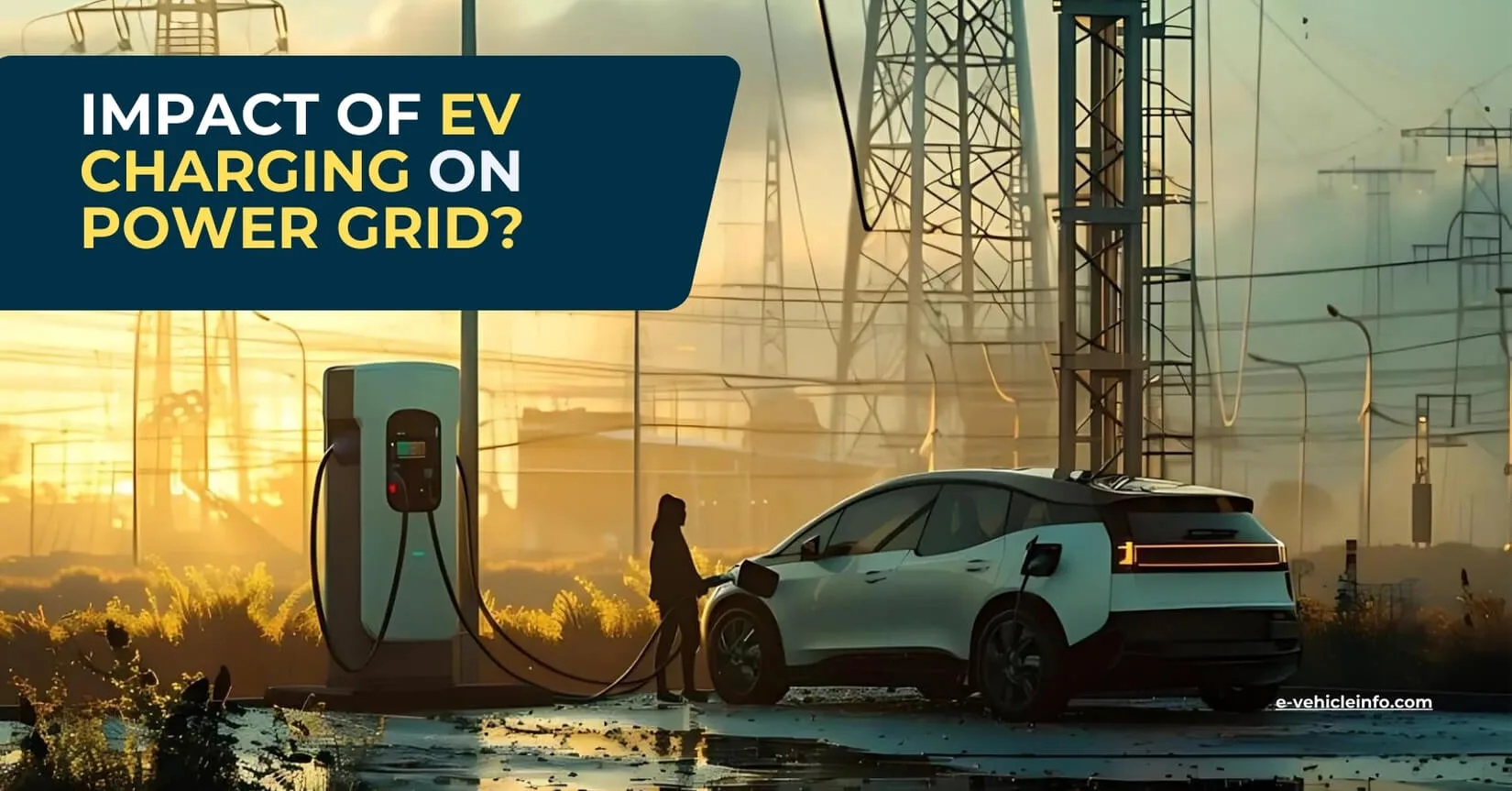
The Indian government’s ambition is to have EV sales accounting for 30% of private cars, 70% of commercial vehicles, and 80% of 2W and 3W by 2030. (source)
Electric vehicles need a large amount of electricity to charge their discharged battery.
In India, on average, a household needs 5.7 kWh per day of electricity. So a car (Tata Nexon has 40.5 kWh) with having 40 kWh capacity battery consumes energy equal to 6-7 households alone.
In a study, it was found that China’s existing power grid can withhold less than 20% of petrol-diesel engine vehicles if they get converted into electric vehicles.
Charging EVs at peak time (when the load on the power grid is more, for example at 6 pm to 9 pm) can burden the grid more. Electric vehicles are considered highly dynamic loads as they are mobile and power consumption depends upon the vehicle traveled in a day.
EVs consume more power in a short time to fully charge the battery.
Single-phase EV chargers increase phase unbalance at the distribution network which increases unwanted negative effects on distribution network operation and connected loads.
According to the study, it is found that rural power distribution faces higher voltage drops and needs voltage regulation devices.
Electricity needs three stages to reach its customers Generation, Transmission, and Distribution (it is the consumer side of power lines).
The high EV energy demand requires a large amount of electric energy to be transmitted from the generation stations to the distribution networks. The distribution networks’ equipment such as transformers and cables may get overloaded due to the new EVs load.
These components are also affected by the type of charging- fast or slow. In a study, it was found that cable can handle up to 25% of EV penetration for slow charging and 15% for fast charging.
Electricity comes in AC form at 50Hz frequency but EV integration causes harmonics distortion (generation of a frequency other than 50Hz of the fundamental frequency) which causes power loss. So the transformer and cable get heated and this causes a decrease in components life.
The choice of charging greatly affects the impacts caused by EV penetration to the grid. Smart Charging and Delayed Charging algorithms can be used.
Smart Charging communicates between the power distributor and Charging stations or points and charges the EVs when the load on the grid is less. It also discharges the battery (EV) to send the power back to the power grid when the demand on the grid is at its peak.
This concept is known as Vehicle to Grid (V2G). It charges the EV when the load on the grid is less so fewer tariffs are applied and ultimately helps EV users to reduce charging costs.
So, this way, Smart charging flattens the load curve and increases the life of power distribution components like transformers, and cables.
However, it is complex and requires more communication protocols so it is costly to implement.
Delayed Charging controls the charging time and charges EV only when off-peak time. So, this way it reduces the cost of charging and tries to make the power grid operate smoothly.
Renewable energy sources like Solar and wind energy when locally integrated into charging stations (works as micro-grid) make the charging station power reliable and reduce the burden of the power grid hence negative impacts are reduced.
In this article, we’ve shared the experience of automotive YouTuber Harsh Explorer(146K+ subscribers), who recently took the Tata Nexon EV…
India’s electric SUV market is getting more exciting than ever. On one side, we have Mahindra — a trusted…
Ultraviolette Automotive has once again raised the benchmark in the electric two-wheeler segment with the introduction of Ballistic+, a high-performance…
Gagan Choudhary, one of India's trusted automotive content creators with over 1.89 million YouTube subscribers, recently shared his in-depth experience…
ZELIO E Mobility, one of India’s rapidly rising electric two-wheeler manufacturers, has launched the facelifted version of its popular low-speed…
Ultraviolette Unveils F77 Ballistic Plus: India’s First AI-Powered Motorcycle Upgrade With Zero Hardware Change. Bengaluru-based electric performance motorcycle manufacturer Ultraviolette…
This website uses cookies.